After the peak of Klimt’s Golden Phase in 1907-8, there was a decline in his use of gold leaf in his paintings, the relationship with his young protégé Egon Schiele developed, and he had separated from the Vienna Secession over its exclusion of crafts from its exhibitions.
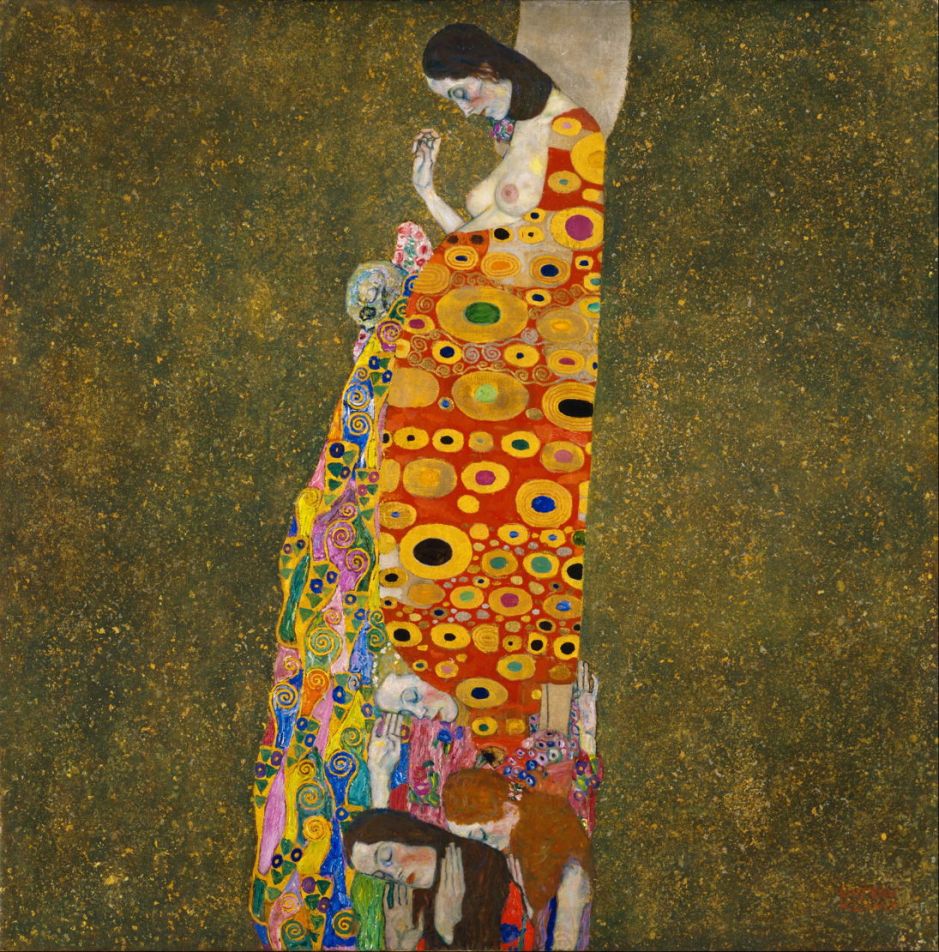
Klimt still used precious metal leaf, including gold and platinum, in his Hope II (1907-08), originally titled Vision by the artist. As with his Hope I, it is a portrait of a woman who is heavily pregnant. The woman’s head is bowed and her eyes closed, which is echoed in the heads of three other women at the foot.
His model for both paintings is thought to have been Herma, one of his favourites. It is also decorated with many of the recurrent patterns and graphic elements which dominated his work in this period, such as the eye/corpuscle and small spirals like tendrils.

Another of his major works, The Kiss (1907–08), is even more characteristic of his Golden Phase. Showing a couple, widely rumoured to be Klimt and Emilie Flöge, in an embrace, he exhibited it as the centrepiece of sixteen of his works in the first exhibition of the new splinter group. It was purchased from there by the Ministry of Education for the nation’s Moderne Gallery.
With Klimt’s personal intervention, the work of the young artist Oskar Kokoschka was included in that first exhibition, helping to launch the latter’s career. Although it had been expected to bring a storm of protest, that failed to materialise, and Kokoschka was so grateful that he dedicated a book to Klimt.

Klimt started work on a second version of Judith, for which he made this study in around 1908. This elevated view is a novel idea among paintings depicting Judith with the head of Holofernes, and her origins as a dancer are apparent here, blurring Judith with Salome and the beheading of John the Baptist.
In narrative terms, the confounding of these two stories may seem odd. In Judith and Holofernes, Judith is a good character who uses seduction as a means to a worthy end, and her joy is derived from her success in beheading the enemy general. In Salome and John the Baptist (after it was reframed by Moreau and Oscar Wilde), Salome is the evil seductress, whose erotic dance is used to induce Herod to have the good person beheaded; her joy is in having her own way, and in the martyrdom of a man who rebutted her advances.
At the time, though, both stories were becoming blurred in a sequence of dance by a seductress leading to the beheading of their partner – far from the Biblical origin of either.

Indeed Klimt’s finished painting of Judith II from 1909 shows his composite Judith/Salome bare-breasted, with the head of Holofernes/John at the lower right, its eyes closed. As in Judith I, at least the head of Judith appears to have been modelled by Adele Bloch-Bauer, and shows a state of near-ecstasy. This was purchased by the Galleria Internazionale d’Arte Moderna from exhibition at the ninth Venice Biennale in 1910, and has remained there in Venice ever since.
In the summer of 1908, Klimt’s summer holiday with the Flöge family at Attersee was different: they stayed for the first time in the Villa Oleander, in Kammerl on Attersee, a location to which they returned each summer until 1912.
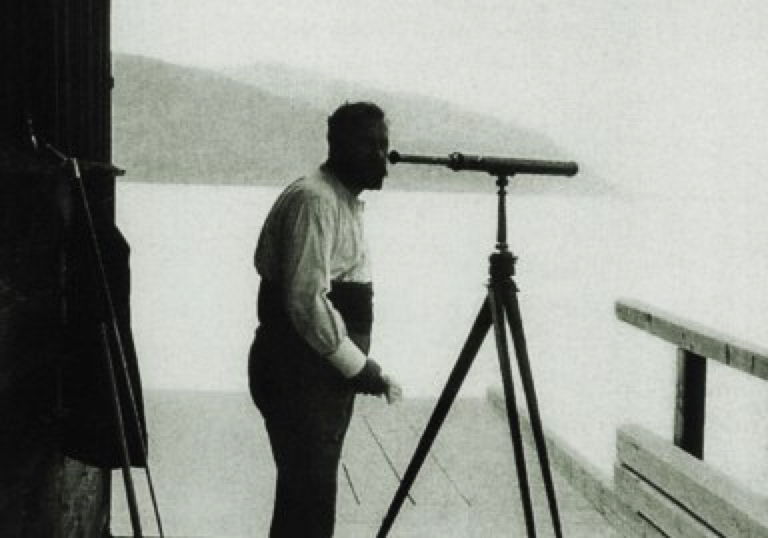
It is not known when Klimt started painting with a telescope, but this photograph is believed to have been taken in about 1905, and clearly shows just that, with his easel at the left. From about 1908, many of the views which he painted during his summer holiday were of the other side of the lake, as seen through his telescope, and this accounts for their extreme loss of depth.
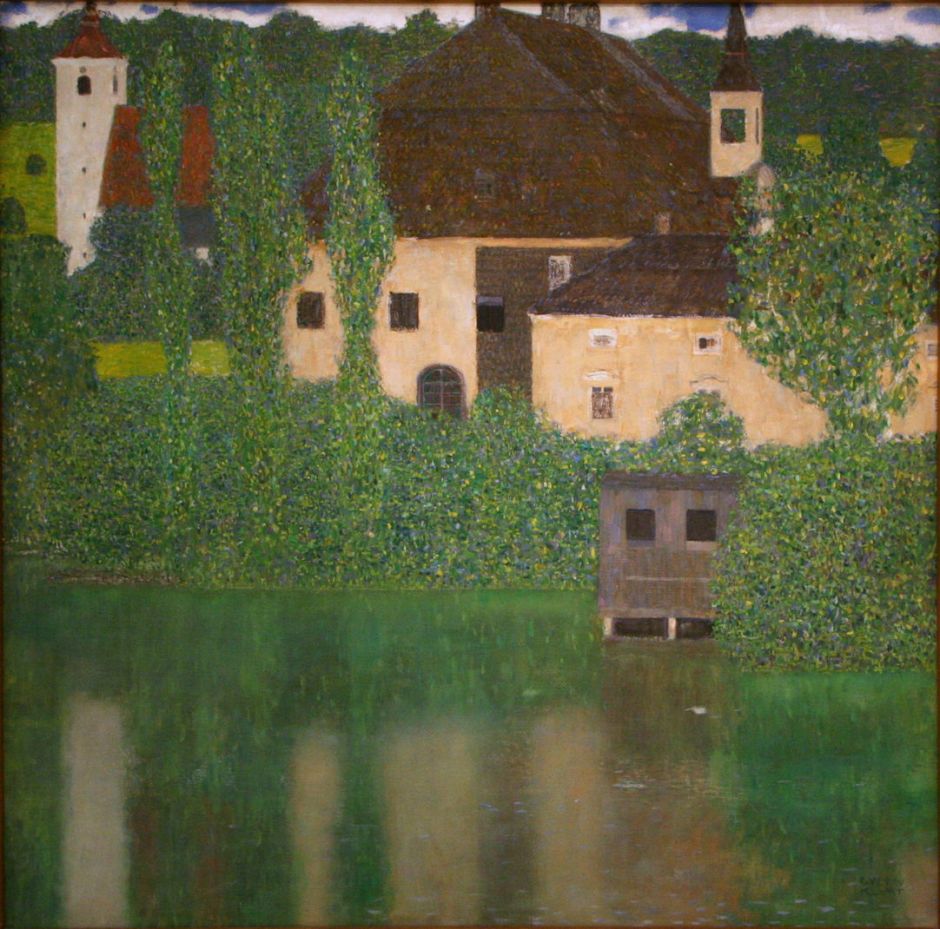
Castle with a Moat shows Unterach Manor on the Attersee Lake, and was probably painted in 1908 or 1909. It incorporates his almost Divisionist dotted foliage with contrasting smooth-textured walls of buildings, all softened in the reflected image. Given the water between the motif and the artist, this must have been painted through a telescope, or possibly from a boat on the lake.
The second exhibition of the splinter group from the Secession in 1909 featured works of art by European artists including Vincent van Gogh, Henri Matisse, Edvard Munch, Jan Toorop, Pierre Bonnard, and Lovis Corinth. Klimt also showed both Hope I and Hope II for the first time there, and Egon Schiele was given his own room too, launching his career. Later that year, Klimt visited Munich, Berlin, Paris, and finally Spain.
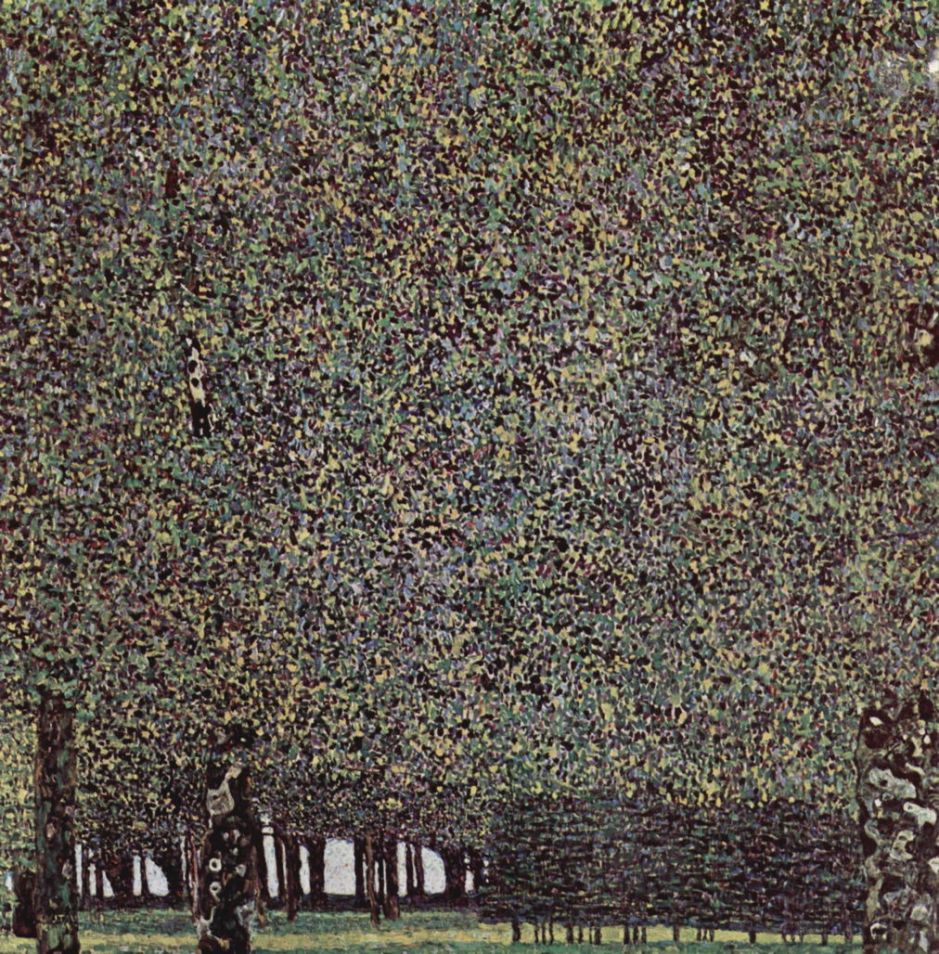
The Park (1909-10) is overwhelmed by the fine but not completely random dots making up the foliage, with the slight relief of the trunks and shrubs at its foot.
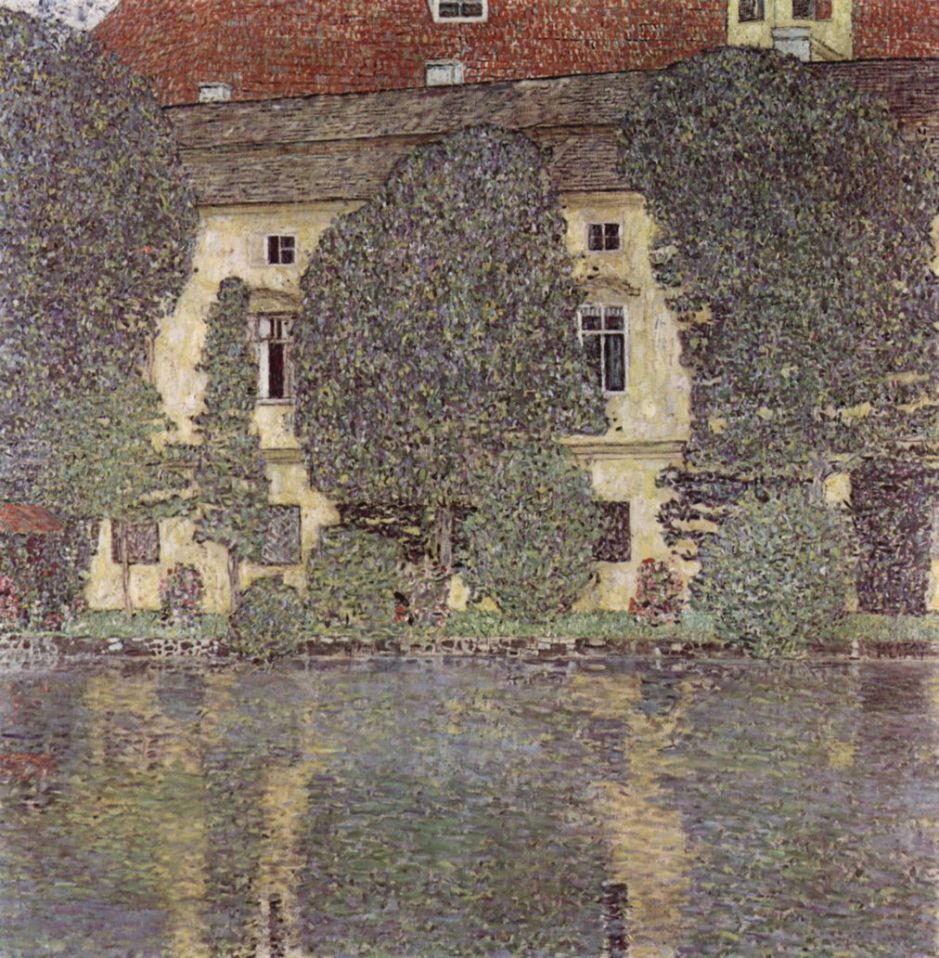
Schloß Kammer at Attersee (1910) is a view across the lake of this manor house, with contrasting textures in foliage, walls, rooves, and the reflections.

Throughout his career, Klimt was active in design work. Two Designs for Jewellery for Otto Wagner (1911) shows him transferring motifs from his large paintings to jewellery. He also designed ‘reform’ clothing which he, Emilie Flöge, and other women in his life wore, and over the period 1905-11 worked on a largely decorative frieze for the Stoclet Palace in Brussels, Belgium.
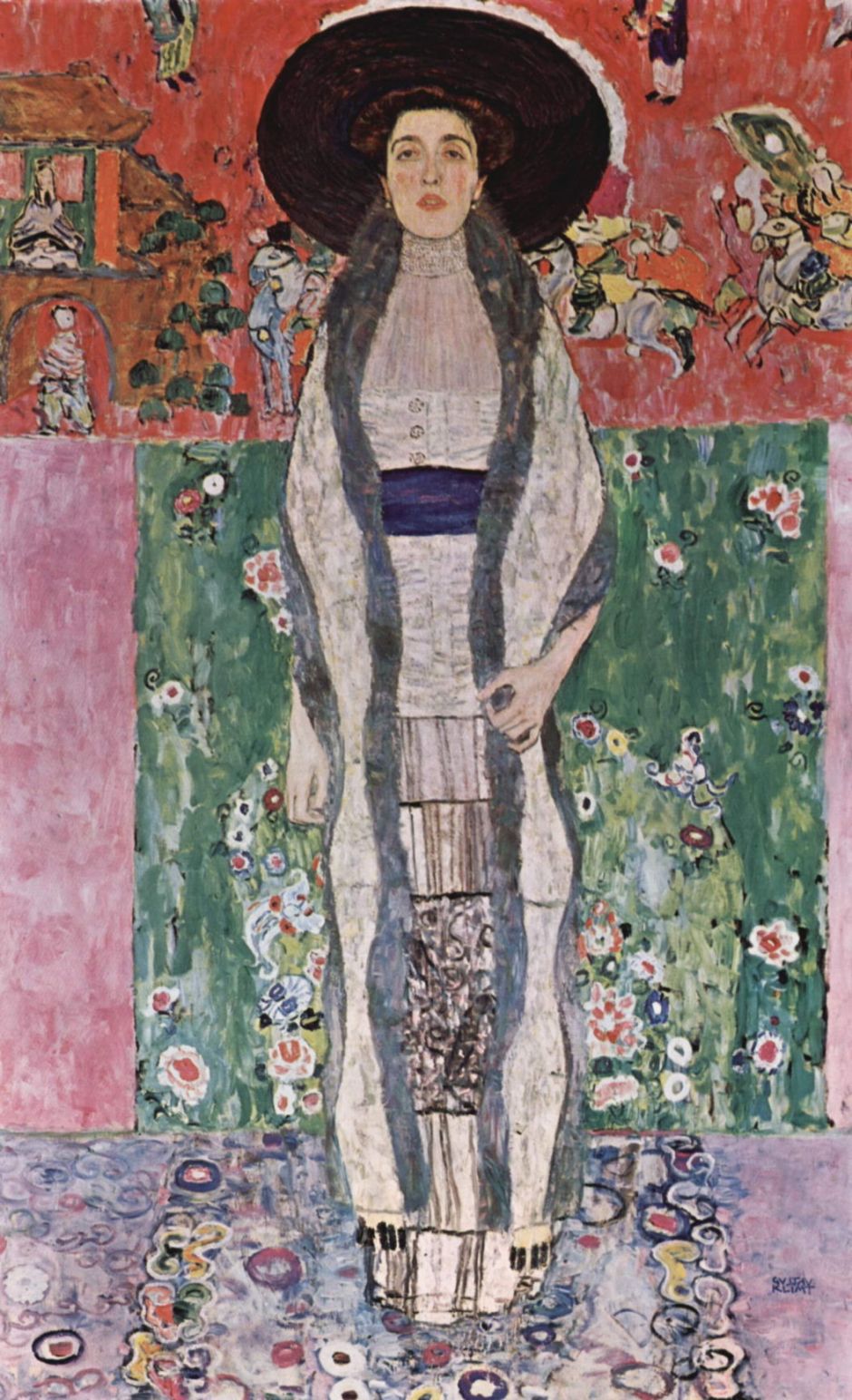
Klimt’s second Portrait of Adele Bloch-Bauer painted in 1912 lacks the breathtaking impact of the first, and is more decorative in its setting. Bloch-Bauer had the distinction of being the only person whose portrait Klimt painted twice, a reflection on the closeness of their relationship and her importance to Klimt’s art.
In 2006, Oprah Winfrey, the talk-show host, bought this painting for nearly $88 million. She sold it again ten years later for almost twice that price.

In the summer of 1912, before going on his annual holiday at Attersee, Klimt met Emilie Flöge in Bad Gastein, to the south of Salzburg in the High Tauern Mountains; in the following summers, they changed their holiday location to Bad Gastein, and that is reflected in his landscape paintings from those years. Farmhouse in Upper Austria (1911-12) follows his works from Attersee in its textural treatment of foliage, but lacks the reflection.
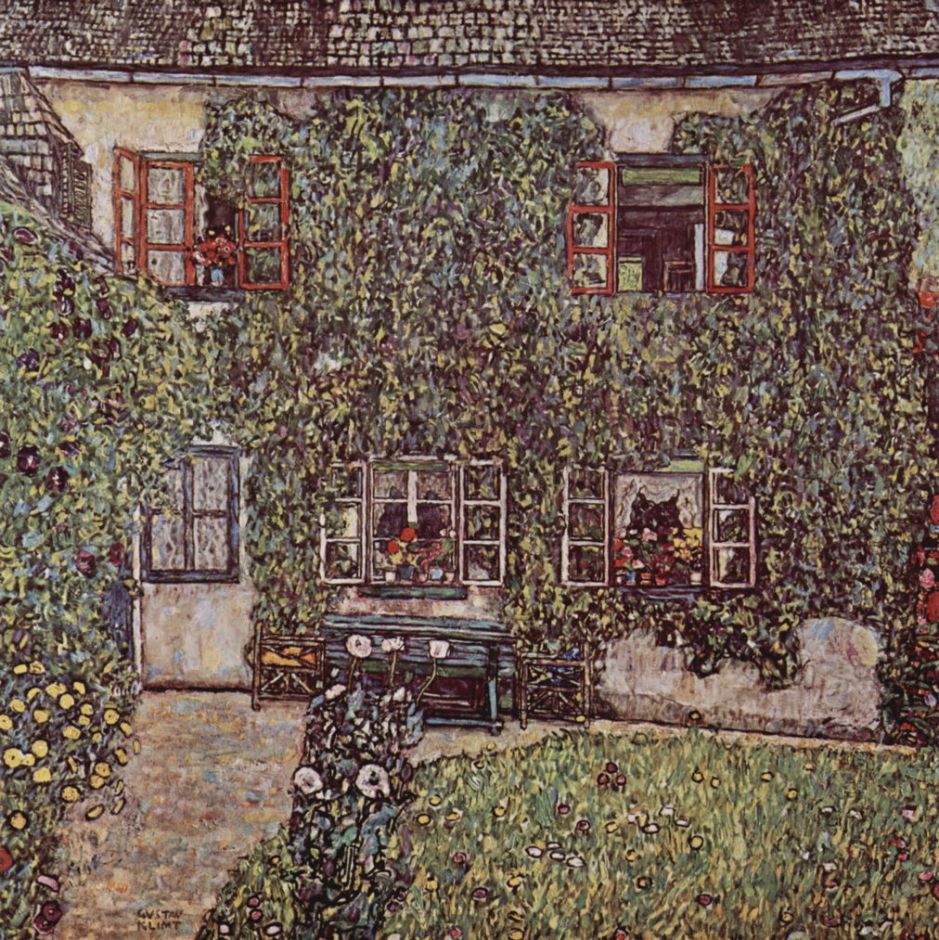
The House of Guardaboschi (1912) may have been painted in 1913, when Klimt stayed with the Flöge family during the first half of August at Lake Guarda in Italy.
References
Stephan Koja (2006) Gustav Klimt, Landscapes, Prestel. ISBN 978 3 7913 3717 3.
Rainer Metzger (2005) Gustav Klimt, Drawings & Watercolours, Thames & Hudson. ISBN 978 0 500 23826 4.
Various larger format books contain most or all of his figurative paintings.

